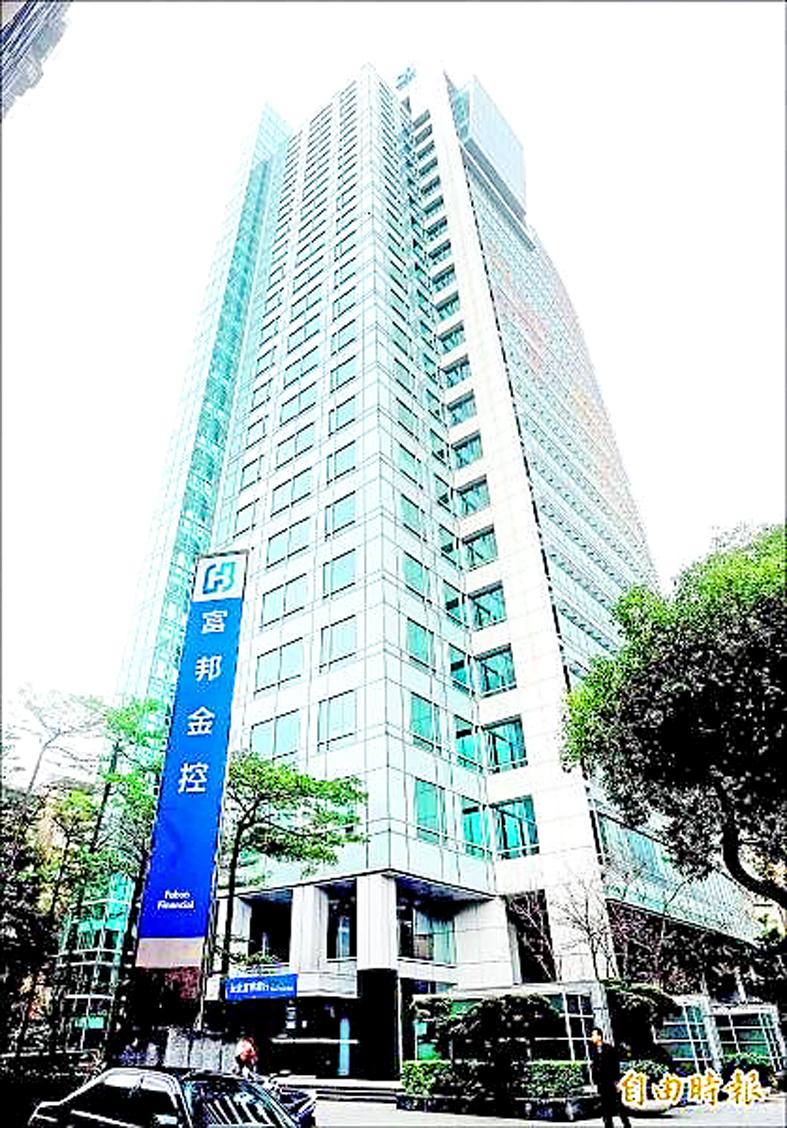Fubon Financial Holding Co (富邦金控), which last week acquired 53.84 percent of Jih Sun Financial Holding Co (日盛金控), yesterday said it plans to buy the remaining 46.16 percent stake in the third quarter and complete the merger by the end of this year.
It would again offer NT$13 per Jih Sun share, the same as its previous public tender offer, to be fair to all Jih Sun shareholders, Fubon Financial president Jerry Harn (韓蔚廷) told an investors’ conference in Taipei.
Having acquired majority control of Jih Sun Financial, Fubon Financial on Tuesday started to recognize its peer’s profits, but operations integration would take more time, Harn said.

Photo: Lin Cheng-kun, Taipei Times
Fubon Financial would start by merging Jih Sun Financial with its operations by the end of this year, then integrate its banking, securities and futures units into Fubon’s arms by the end of next year, he said.
Jih Sun Financial would cease to exist at the end of this year, but Jih Sun International Bank (日盛銀行), Jih Sun Securities Co (日盛證券) and Jih Sun Futures Co (日盛期貨) would continue operating until they become part of Taipei Fubon Commercial Bank (台北富邦銀行), Fubon Securities Co (富邦證券) and Fubon Futures Co (富邦期貨) respectively next year, he said.
“The consolidation of the banking units and securities arms involves dealing with different information systems and employees from both sides. We need to be more cautious,” Harn said.
Although some of Jih Sun Bank’s and Taipei Fubon Bank’s branches overlap in some areas, they would not necessarily be closed, Harn said.
“We would take this opportunity to expand our presence in the countryside and southern Taiwan,” he said.
Even though some branches would be closed eventually, it does not mean that Jih Sun employees would be dismissed, Harn said, adding that Fubon Financial would protect workers’ rights.
“Fubon Financial has conducted many small and big mergers and acquisitions over the past 20 years, and we have never had major labor disputes. Many of our top managers were from the target companies we acquired,” Harn said.
The acquisition is expected to improve Fubon Financial’s efficiency and cost management, as well as boost its revenue, he said.
The deal would raise Fubon Securities’ market share from 5.57 percent at the end of last year to 9.14 percent after absorbing Jih Sun Securities, which would make it the second-largest securities firm after Yuanta Securities Co (元大證券), it said.
Fubon Futures’ market share would also rise from 2.6 percent to 5.23 percent, with its ranking moving from ninth to fifth, while Taipei Fubon Bank’s number of branches would expand to 174, ranking it first, followed by Cathay United Bank (國泰世華銀行) with 164, it said.
Harn also announced that Fubon Financial’s planned cash dividend payout ratio this year would be similar to last year’s 36.63 percent.
That would imply a cash dividend of NT$3.12 per share, based on the company’s record earnings per share of NT$8.54 last year.

Shares in Taiwan closed at a new high yesterday, the first trading day of the new year, as contract chipmaker Taiwan Semiconductor Manufacturing Co (TSMC, 台積電) continued to break records amid an artificial intelligence (AI) boom, dealers said. The TAIEX closed up 386.21 points, or 1.33 percent, at 29,349.81, with turnover totaling NT$648.844 billion (US$20.65 billion). “Judging from a stronger Taiwan dollar against the US dollar, I think foreign institutional investors returned from the holidays and brought funds into the local market,” Concord Securities Co (康和證券) analyst Kerry Huang (黃志祺) said. “Foreign investors just rebuilt their positions with TSMC as their top target,

REVENUE PERFORMANCE: Cloud and network products, and electronic components saw strong increases, while smart consumer electronics and computing products fell Hon Hai Precision Industry Co (鴻海精密) yesterday posted 26.51 percent quarterly growth in revenue for last quarter to NT$2.6 trillion (US$82.44 billion), the strongest on record for the period and above expectations, but the company forecast a slight revenue dip this quarter due to seasonal factors. On an annual basis, revenue last quarter grew 22.07 percent, the company said. Analysts on average estimated about NT$2.4 trillion increase. Hon Hai, which assembles servers for Nvidia Corp and iPhones for Apple Inc, is expanding its capacity in the US, adding artificial intelligence (AI) server production in Wisconsin and Texas, where it operates established campuses. This

H200 CHIPS: A source said that Nvidia has asked the Taiwanese company to begin production of additional chips and work is expected to start in the second quarter Nvidia Corp is scrambling to meet demand for its H200 artificial intelligence (AI) chips from Chinese technology companies and has approached contract manufacturer Taiwan Semiconductor Manufacturing Co (TSMC, 台積電) to ramp up production, sources said. Chinese technology companies have placed orders for more than 2 million H200 chips for this year, while Nvidia holds just 700,000 units in stock, two of the people said. The exact additional volume Nvidia intends to order from TSMC remains unclear, they said. A third source said that Nvidia has asked TSMC to begin production of the additional chips and work is expected to start in the second

US President Donald Trump on Friday blocked US photonics firm HieFo Corp’s US$3 million acquisition of assets in New Jersey-based aerospace and defense specialist Emcore Corp, citing national security and China-related concerns. In an order released by the White House, Trump said HieFo was “controlled by a citizen of the People’s Republic of China” and that its 2024 acquisition of Emcore’s businesses led the US president to believe that it might “take action that threatens to impair the national security of the United States.” The order did not name the person or detail Trump’s concerns. “The Transaction is hereby prohibited,”